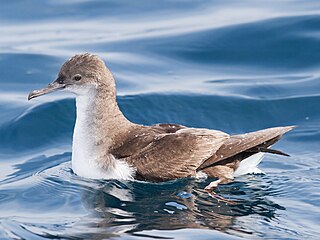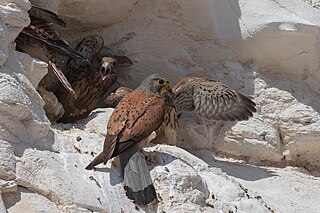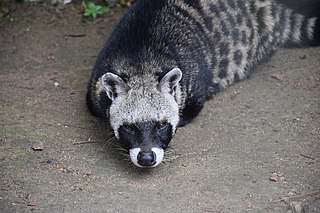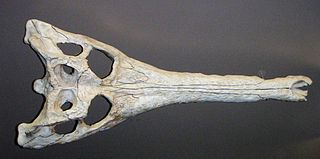
The Cucurbitales are an order of flowering plants, included in the rosid group of dicotyledons. This order mostly belongs to tropical areas, with limited presence in subtropical and temperate regions. The order includes shrubs and trees, together with many herbs and climbers. One major characteristic of the Cucurbitales is the presence of unisexual flowers, mostly pentacyclic, with thick pointed petals. The pollination is usually performed by insects, but wind pollination is also present.

Begonia is a genus of perennial flowering plants in the family Begoniaceae. The genus contains more than 2,000 different plant species. The Begonias are native to moist subtropical and tropical climates. Some species are commonly grown indoors as ornamental houseplants in cooler climates. In cooler climates some species are cultivated outside in summertime for their bright colorful flowers, which have sepals but no petals.
Panthera is a genus within the family Felidae that was named and described by Lorenz Oken in 1816 who placed all the spotted cats in this group. Reginald Innes Pocock revised the classification of this genus in 1916 as comprising the tiger, lion, jaguar, and leopard on the basis of common cranial features. Results of genetic analysis indicate that the snow leopard also belongs to the genus Panthera, a classification that was accepted by IUCN Red List assessors in 2008.

Falcons are birds of prey in the genus Falco, which includes about 40 species. Falcons are widely distributed on all continents of the world except Antarctica, though closely related raptors did occur there in the Eocene.

Hordeum is a genus of annual and perennial plants in the grass family. They are native throughout the temperate regions of Africa, Eurasia, and the Americas.
Phylogeography is the study of the historical processes that may be responsible for the past to present geographic distributions of genealogical lineages. This is accomplished by considering the geographic distribution of individuals in light of genetics, particularly population genetics.

Puffinus is a genus of seabirds in the order Procellariiformes that contains about 20 small to medium-sized shearwaters. Two other shearwater genera are named: Calonectris, which comprises three or four large shearwaters, and Ardenna with another seven species.

Crocodylus is a genus of true crocodiles in the family Crocodylidae.

Diapensiaceae is a small family of flowering plants, which includes 15 species in 6 genera. The genera include Berneuxia Decne., Diapensia L., Galax Sims, Pyxidanthera Michx., Shortia Torr. & A.Gray, and Schizocodon Siebold & Zucc.. Members of this family have little economic importance; however, some members are cultivated by florists.

Pantherinae is a subfamily within the family Felidae; it was named and first described by Reginald Innes Pocock in 1917 as only including the Panthera species. The Pantherinae genetically diverged from a common ancestor between 9.32 to 4.47 million years ago and 10.67 to 3.76 million years ago.

The term kestrel is the common name given to several species of predatory birds from the falcon genus Falco. Kestrels are most easily distinguished by their typical hunting behaviour which is to hover at a height of around 10–20 metres (35–65 ft) over open country and swoop down on ground prey, usually small mammals, lizards or large insects, while other falcons are more adapted for active hunting during flight. Kestrels are notable for usually having mostly brown in their plumage.

Begoniaceae is a family of flowering plants with two genera and about 2040 species occurring in the subtropics and tropics of both the New World and Old World. All but one of the species are in the genus Begonia. There have been many recent discoveries of species in the genus Begonia, such as Begonia truncatifolia which is endemic to San Vincente, Palawan. B. truncatifolia is smaller in size than other species of the genus Begonia and this new species is proposed Critically Endangered by standards set by the IUCN. The only other genus in the family, Hillebrandia, is endemic to the Hawaiian Islands and has a single species. Phylogenetic work supports Hillebrandia as the sister taxon to the rest of the family. The genus Symbegonia was reduced to a section of Begonia in 2003, as molecular phylogenies had shown it to be derived from within that genus. Members of the genus Begonia are well-known and popular houseplants.

The hierofalcons are four closely related species of falcon which make up the subgenus Hierofalco:

Civettictis is a genus of viverrid that contains the extant African civet (Civettictis civetta) and a recently described extinct relative from the Plio-Pleistocene of South Africa known as Civettictis braini.

Potamochoerus is a genus in the pig family (Suidae). The two species are restricted to sub-Saharan Africa, although the bushpig, possibly due to introduction by humans, also occurs in Madagascar and nearby islands. Early in the 20th century, there were considered to be as many as five different species within the genus. These were gradually consolidated, until, in the 1970s, it was generally agreed that all were representatives of just a single species. The bushpig was again recognised as a separate species from about 1993.

Toyotamaphimeia machikanensis is an extinct gavialid crocodylian which lived in Japan during the Pleistocene. A specimen recovered in 1964 at Osaka University during the construction of a new science building has been dated to around 430–380 thousand years old based on the stratum in which it was found. Unassigned species from same genus is also known from Taiwan. T. machikanensis was a fairly large crocodylian with a 1 m (3.3 ft) skull and a total length up to 7.7 m (25 ft). It was originally described as a member of the genus Tomistoma.

Gavialosuchus is an extinct genus of gavialid crocodylian from the early Miocene of Europe. Currently only one species is recognized, as a few other species of Gavialosuchus have since been reclassified to other genera.

The Vandeae is a large monophyletic tribe within the family of orchids.
Brachyuranochampsa is an extinct genus of crocodilian.
Rimasuchus is an extinct genus of crocodile from the Miocene of Egypt and possibly Libya. Only one species - Rimasuchus lloydi - is currently known. It was previously thought to be a species of Crocodylus, but is now thought to be more closely related to the modern African dwarf crocodiles (Osteolaemus).
















